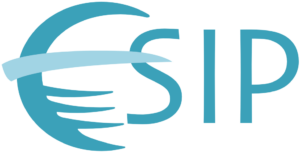Welcome to the new ESIP website!
ESIP Partner – California Water Data Consortium: Cross-sector Collaboration to Advance Open Water Data
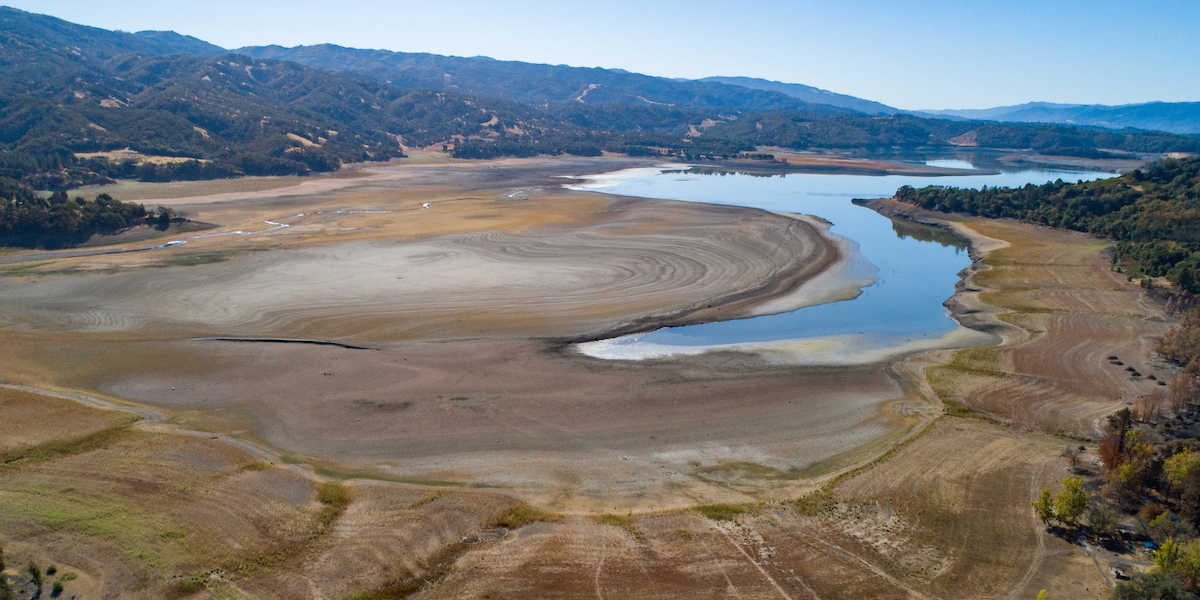
Collaboration is one of the core values of Earth Science Information Partners (ESIP). That’s why partnership matters to us. ESIP Partners are organizations leading the Earth science data community. Our Partner the California Water Data Consortium brings together scientists, policymakers and agencies to help ensure everyone in the state has clean water and solid data. Here is a guest blog explaining their work.
California Water Data Consortium
What we do: The Consortium works to ensure we have the best possible water and ecological information in California so that we make decisions that allow everyone living and working here an ability to prosper in the face of unprecedented climate challenges.
Why we are ESIP Partners: We get transparent, well-described data when we collaborate with partners across industries and governments.
Learn more: cawaterdata.org
Water is California’s most precious resource. It’s critical to the state’s economic, social and environmental future. Every day, across our state, people are forced to make decisions about water based on incomplete information. These decisions affect our ability to swim in a river, grow food, catch fish, drink clean water or even build a house. Climate change and the resulting “weather whiplash” of drought and floods are making these decisions even more challenging.
If California is to continue to thrive, we need to make sure that the decisions we make about water are based on the best possible data.
The California Water Data Consortium is an independent, nonprofit organization created by a partnership of state agencies and others to ensure that we have the best possible information about our state’s water so that we can make decisions that will allow California to continue to prosper in the face of unprecedented climate challenges. The Consortium was established to help implement AB 1755, the Open and Transparent Water Data Act, which was designed to dramatically improve how the state develops and uses water and ecological data. We are funded with donations from foundations and individuals as well as voluntary support from state agencies and water districts. Our Board and Steering Committee include representatives from state agencies, local water agencies, agriculture, philanthropy, business, nonprofits and other water and data experts.
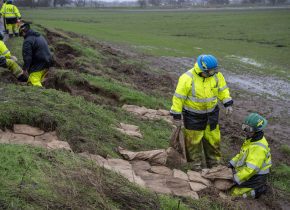
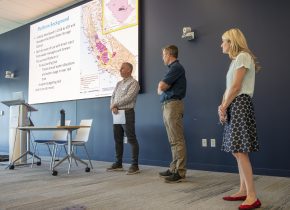
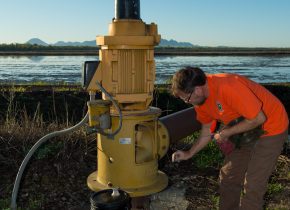
The California Water Data Consortiums hosts a number of programs including well monitoring, groundwater accounting and flood mitigation. Photo Credits: Environmental Defense Fund / Kike Arnal | California Department of Water Resources
Using Data to Navigate Complex Systems
California’s success relies on our ability to deliver water where it’s needed – for farming, drinking, economic development and to conserve our natural environment. It isn’t easy.
Our complex system of water delivery relies on an intricate system of dams, rivers, aqueducts, groundwater and runoff managed by thousands of public utilities, water companies, districts and other entities with overlapping authorities. The legal frameworks surrounding these entities and the water systems that they manage are similarly complex and multi-layered.
The system of gathering and using data about water is equally complex. At a time when big data and artificial intelligence are changing every aspect of American life, many water decisions are being made based on inaccessible information from spreadsheets or PDFs, using a dizzying array of descriptions and interpretations of what is being measured. This is just one example of our current system, which highlights the need to develop a cohesive, comprehensible system to manage information about what is happening with water in our state.
Adapt to a Rapidly Changing Climate Reality
Climate change has made a challenging system even more precarious. As the winter of 2022-23 showed, California is likely to continue experiencing weather whiplash.
We are sure to see extreme drought as well as dangerous flooding in ways that are hard to anticipate and which put human health and life at greater risk. Adapting to this rapidly changing climate reality in a timely and equitable manner requires having accurate and accessible data about our water and the communities and ecosystems that rely on it.
We need to better understand our water systems to effectively manage them – particularly during extremely wet or dry periods. Making decisions about water without sufficient data is like flying a plane in the fog with no instrument panel. Without vital information about where you are, where you’re going, or how long you can stay in the air, you would never take off. We simply cannot gamble California’s future based on our current approach. Data is the key.
Data-driven Decision Making
The California Water Data Consortium is helping to make sure that decisions about water are made using timely, accurate, easily accessible and publicly available data to guarantee California’s long-term success. We believe that data is a public resource and should be used to benefit everyone.
A bit of what we are currently working on:
- Groundwater Accounting Platform: The Groundwater Accounting Platform enables water managers, landowners, and water users across California to track water availability and use in near real-time. We host webinars and other events on the Platform. Check them out and register: cawaterdata.org
- Telemetered Water Data: In California, we don’t have basic information about how much water is in a river, like how much water is being used or when and by whom. The Consortium is partnering with the California State Water Resources Control Board to start up a new data system and develop recommendations that will support use of telemetered water measurement devices. Developing collaborative recommendations will ensure both compliance with existing State Agency regulatory requirements, while maximizing flexibility for local water reporters.
- Urban Water Reporting: Water supply and use data is vital to understanding urban water trends, needs and to support water planning by all levels of government and the public. The California Water Data Consortium is partnering with the Department of Water Resources and the State Water Resources Control Board. Together, we are identifying opportunities to align current water supply and use data collected and reported by local and wholesale water agencies with State agency reporting requirements. This will improve data use, reduce reporting burdens and expand access to timely, interoperable, high-quality, secure, reliable data. In addition to improving public understanding and access to core water supply and use data, these data services will provide the source data needed to generate critical information for managing water resources.
How we work
We bring people and institutions together to exchange ideas, synthesize information and envision new ways to share data. By doing so, we help with ESIP’s mission and make data more easily available to anyone who needs it.
We conduct research, host panels and webinars, share data and communicate across the field about how to build a resilient, prosperous future using the best possible information.
Our goal is to be a useful, independent, trusted partner for all agencies, communities and decision makers to make decisions on water data and how best to make use of it. We are building a community of water data users and advocates, and we’re working to improve how water is managed by articulating the value of water data. Want to learn more? Read more about our projects: cawaterdata.org/news
This blog was written by California Water Data Consortium researcher Hannah Ake. Edits were provided by Allison Mills from ESIP.
ESIP stands for Earth Science Information Partners, a community of partner organizations and volunteers. We work together to meet environmental data challenges and look for opportunities to expand, improve and innovate across Earth science disciplines.Learn more esipfed.org/get-involved and sign up for the weekly ESIP Update for #EarthScienceData events, funding, webinars and ESIP announcements.




